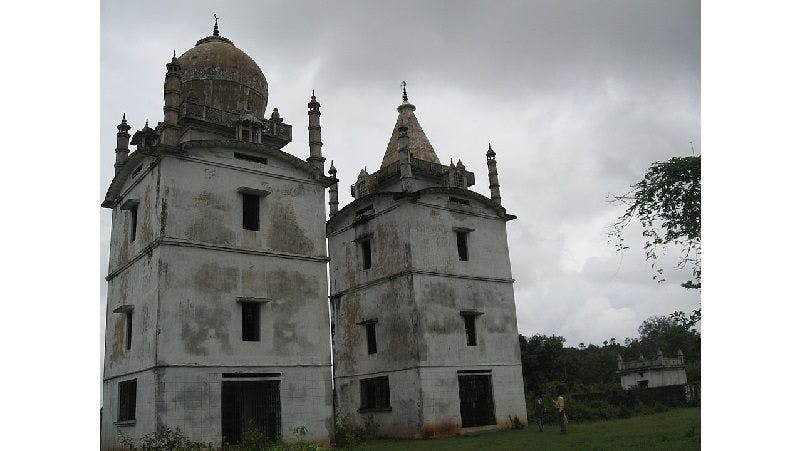McCluskieganj: A Homeland For Anglo-Indians
BOOKMARK
In the hills above the Chhota Nagpur Plateau in Jharkhand is a homeland of the Anglo-Indian community. At least it was, for a few decades after it was set up in the 1930s.
Christened ‘McCluskieganj’ after the man who founded this unusual settlement, it was meant to be a promised land for a community of mixed Indian and European parentage, who wanted to but couldn’t quite fit into either Indian or British society. Slighted and marginalised – the British never treated Anglo-Indians as equals and Indians viewed them with suspicion – the community would finally have a place all their own.
McCluskieganj lies at the top of a winding mountain road 65 km from Ranchi. In its heyday, it was set like a jewel amid orchards and pastures, and blessed with the waters of the Dugadugi River. Families like the Kearneys, Stewarts, Merediths, Barretts, Potters and Hourigans lived in sprawling bungalows with crackling fireplaces and sloping roofs that boasted cascades of bougainvillaea draped across the gables. These European-style bungalows had generous porches at the end of long driveways and were surrounded by pretty gardens dotted with marigolds and delicate pansies.
Back in the day, life was darn good. The men wore bush shirts, dress shirts, suits and bowler hats, and the women pretty frocks, pleated skirts and blouses, bows in their hair, and lacy gowns on special occasions. When they went hunting, the dress code was khaki shorts, sola hats and bush shirts.
When McCluskieganj was a thriving town, sing-a-longs would liven up the nights, rum and whiskey flowed freely, and the town’s grand Christmas and New Year balls were legendary.
Founding The Town
The Anglo-Indian community, which desperately wanted to legitimise its identity in a newly emerging India, made McCluskieganj their homeland thanks to an opportunity spotted by a real estate developer in Calcutta. An Anglo-Indian himself, Ernest Timothy McCluskie, after whom the town is named, founded the Colonisation Society of India in 1933, a cooperative society, to roll out his plan.
An astute businessman who had also represented the Anglo-Indian community in the Bengal Legislative Council, McCluskie was a man of some standing. He managed to convince the local ruler, Maharaja Ratu of the Chhota Nagpur Plateau, to lease 10,000 acres of land in nine villages to the Colonisation Society of India, in perpetuity. The Society, in turn, sold shares on the basis of which plots were allotted in this homeland or ‘mooluk’ for Anglo-Indians.
McCluskie went all-out to make his model town a success. He sent circulars to 2 lakh Anglo-Indians across the country, to invite them to settle there.
– One advertisement in the Society’s newsletter called the ‘Colonisation Observer’, said, “No longer can it be said that we wander in a strange land”.
McCluskie had struck a chord. His shares sold like hot cakes and, in 10 years, 400 Anglo-Indian families set down roots in what they believed was Utopia. They built schools for their children, clubs for entertainment, bakeries, churches, a post office, an abattoir and a cemetery for the townsfolk.
Decline And Fall
But McCluskieganj was destined to fail.
By the end of the 1940s, the residents started leaving for greener pastures. Many settled overseas while others migrated to the cities. By the late 1970s, less than 30 families remained. The pianos fell silent, the laughter dried up and the gramophones stopped turning. Today, there are less than 20 Anglo-Indian families in McCluskieganj, a shabby shadow of its former self.
What does it look like today? Many of the grand bungalows here are empty and crumbling, some have been renovated and rented to holidaymakers, others double as hostels for students, and still others are occupied by the caretakers of well-to-do residents who have long since left.
So, what went wrong?
Built in the middle of nowhere, McCluskieganj was exactly like the people who clung to it – it had no moorings.
Tacked on to the raw and rugged landscape of the Chhota Nagpur plateau, the tribal heartland of India, was a ‘Chhota England’, if you please. Its very name, ‘McCluskieganj’, echoed its duality. Its implausibility.
– Instead of being a homeland for a community that felt it ‘didn’t belong’ to the rest of India, McCluskieganj accentuated the identity of its Westernised, English-speaking, largely Christian residents.
It was an exclusionist society. Instead of finding dignity, the people who lived here became objects of curiosity.
And, yet, McCluskieganj’ may not have met such a swift end had its founder and its residents accounted for one crucial detail – a sustainable livelihood. The residents were expected to survive on agriculture, a way of life alien to the Anglo-Indian community. With no employment opportunities, the second generation packed up and left.
When McCluskie envisioned this ‘homeland’, was he selling a vulnerable community little more than hope? Was it just an elaborate business deal?
Now, get a chance to engage with leading experts from across the world, enjoy exclusive in-depth content, curated programs on culture, art, heritage and join us on special tours, through our premium service, LHI Circle. Subscribe here.









